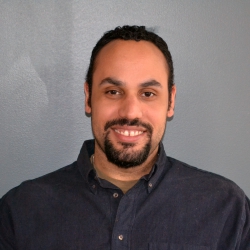Sep
26
2013

Written by Sean Thomas-Breitfeld
Today I’m in DC to attend the Center for Community Change’s annual Change Champions Awards dinner. Both Frances and I have long histories with CCC – she was a fellow there in the late 90’s and I was on staff there for nine years. And as an organization concerned with issues of poverty and inequity today and looking to support the social movements that can overcome those problems tomorrow, BMP deeply admires CCC’s success in strengthening, connecting and mobilizing grassroots groups to advance policies that help low-income people and communities of color.
One of the policy issues that I was involved with in my time at the Center was the fight for comprehensive immigration reform. To tell the story of this struggle, CCC created an online timeline that takes you through all five stages of movement building. Instead of starting with the marches in 2006 that were widely seen as the start of a new social movement, the timeline starts in 2000 when CCC was in the middle of another national campaign; this one on poverty and welfare reform that knit together diverse organizations (both immigrant and non-immigrant groups). Through their work on welfare reform, those organizations came to see the struggle for immigrant rights as part of the anti-poverty agenda and formed the Fair Immigration Reform Movement out of that realization.
As part of their timeline project, I sat down for an interview and talked about my time working for the Center and FIRM, which CCC has staffed and helped grow. Since I haven’t worked on immigration since 2011, the interview gave me a chance to reflect on how important the intersectional perspective – connecting immigration and poverty (and race) – was to my development as a young staffer, and how much it has informed my thinking about movement building ever since.
In the interview, I ended up talking a lot about work we did in Alabama to support the fight against HB 56 – a state law that was part of a rash of anti-immigrant legislation sweeping the states. These anti-immigrant laws and the overtly racist anti-immigrant rhetoric we hear from pundits and lawmakers has created an opportunity for movement leaders to recast the immigrant struggle as a racial justice fight. And in Alabama, the history of the Civil Rights Movement was so present and alive that it became so much more meaningful to see the entire community – immigrant, Latino, Black, White – turn out for rallies and marches and trainings and strategy meetings. That instinct to see the connections between struggles and communities has continued, if not grown; and I think it will make the next decade really exciting for movement building.
